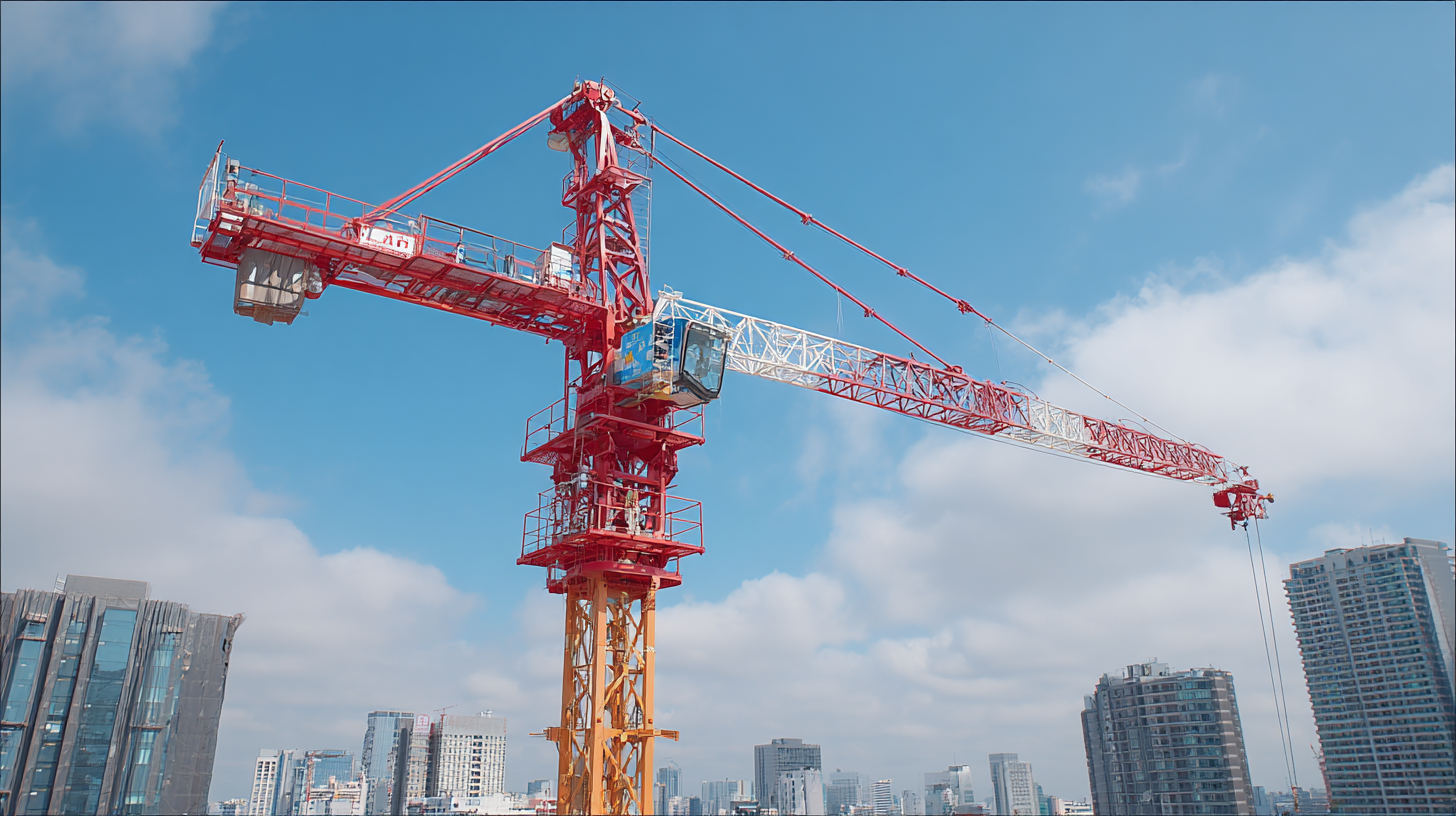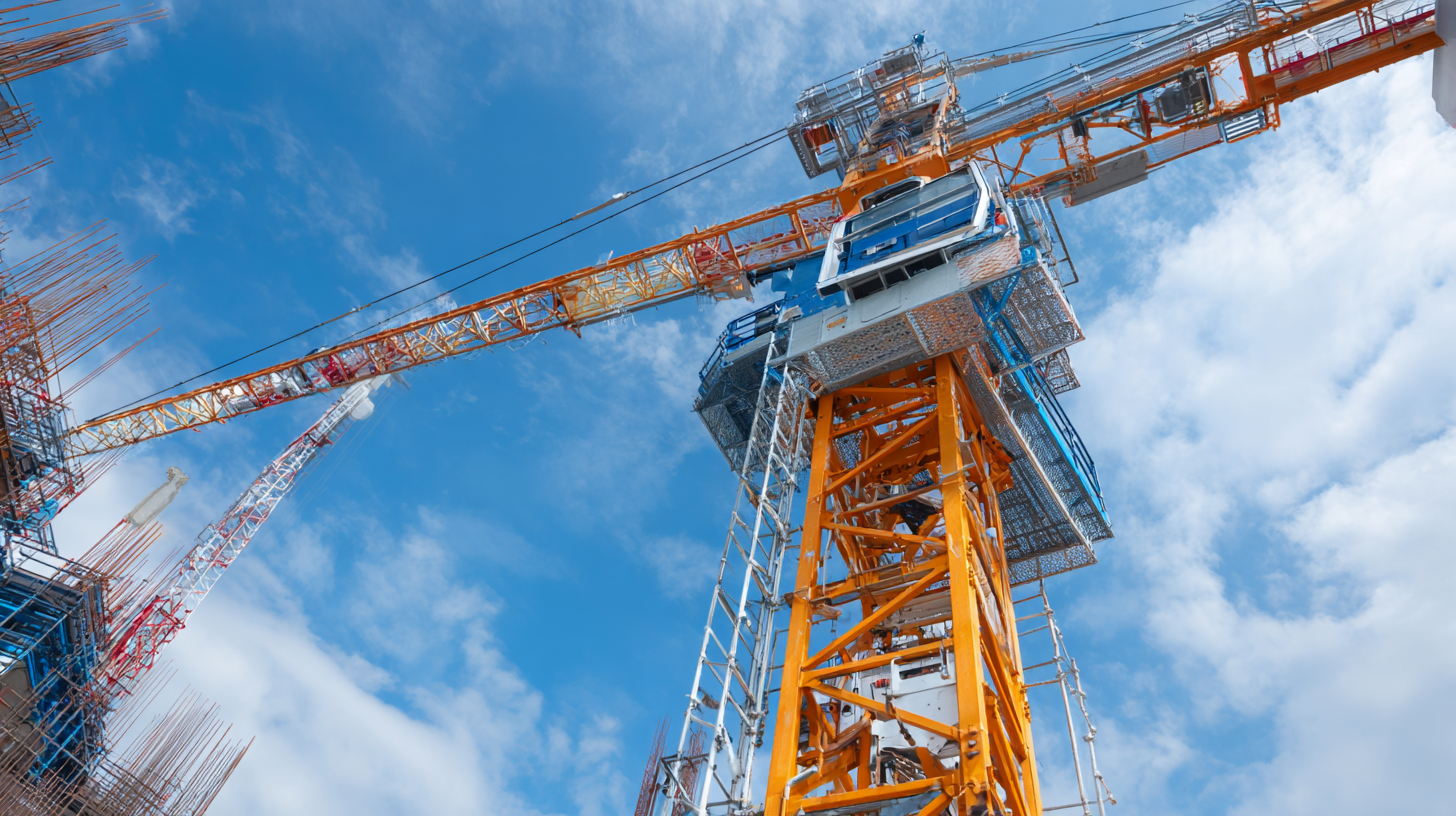As the construction industry moves towards 2025, the evolution of Tower Cranes is set to play a pivotal role in shaping modern building practices. According to a report by MarketsandMarkets, the global tower crane market is projected to reach USD 5.12 billion by 2025, driven by increasing urbanization and the need for high-rise structures. This trend necessitates not only the selection of high-quality manufacturers but also an understanding of the latest technological advancements in tower cranes. With innovations such as the integration of digital tools and enhanced automation, construction companies must be vigilant in choosing the best types of tower cranes that align with their project needs. In this blog, we'll explore how to identify premium manufacturers while navigating the best options in the evolving landscape of tower crane technology.

As we look ahead to 2025, the tower crane industry is poised for significant advancements driven by technology and innovative design. Emerging trends are expected to enhance the efficiency, safety, and functionality of tower cranes, aligning with the increasing demands of urban construction projects. According to a report by MarketsandMarkets, the global tower crane market is projected to reach USD 6.9 billion by 2026, reflecting a compound annual growth rate (CAGR) of 6.3%. This growth underscores the need for smart cranes that integrate IoT (Internet of Things) for real-time monitoring and predictive maintenance, reducing downtime and operational costs.

Another critical trend is the emphasis on automation and robotics in tower crane operations. Recent studies from McKinsey indicate that automated construction processes can increase productivity by up to 30%. Tower cranes equipped with AI-driven systems will enable more precise lifts, enhancing safety and decreasing the likelihood of human error. Furthermore, sustainable design practices are becoming paramount, with manufacturers focusing on energy-efficient models that reduce emissions and energy consumption by as much as 40%, as per the World Economic Forum. These innovations not only advance operational capabilities but also align with global sustainability goals, ensuring that the construction industry adapts to the challenges of the future.
The global construction market is evolving rapidly, with increasing demands driving innovations in tower crane technology. As urbanization accelerates, cities are expanding upwards, necessitating cranes that can handle significant heights and heavy loads while working in constrained spaces. Manufacturers are responding to these challenges by developing more efficient, compact designs that do not compromise on performance. Features like telematics integration enable real-time monitoring of crane operation, improving safety and operational efficiency on job sites.
Additionally, sustainability is becoming a critical focus area for the industry. As environmental concerns grow, construction companies are seeking eco-friendly solutions, leading to innovations in electric and hybrid tower cranes. These advancements reduce carbon emissions and energy consumption, aligning with global sustainability goals. The demand for automation in construction is also reshaping design priorities, pushing manufacturers to create cranes that can be operated remotely or equipped with advanced sensors for improved precision and reduced labor costs. As the market continues to evolve, tower crane innovations will play a vital role in meeting the needs of modern construction projects worldwide.
As the construction industry progresses toward 2025, sustainability and eco-friendly practices are becoming paramount, especially in the realm of tower crane manufacturing. According to a report by the International Council on Clean Transportation (ICCT), construction machinery, including tower cranes, contributes approximately 25% of greenhouse gas emissions from the construction sector. This has prompted manufacturers to seek innovative solutions that not only reduce carbon footprints but also enhance operational efficiency.
A growing trend is the integration of electric and hybrid drive systems in tower cranes. A study by Global Market Insights projects that the demand for electric cranes will increase by over 30% by 2025, driven by their lower environmental impact. Additionally, manufacturers are exploring the use of sustainable materials such as recycled metals and composites, which can reduce the overall resource consumption and emissions associated with crane production. The commitment to eco-friendly practices not only aligns with regulatory pressures but also appeals to a more environmentally conscious market, offering a competitive edge in a rapidly evolving industry.
As the focus on sustainability heightens, companies are also investing in emissions monitoring technologies. Reports from the Construction Equipment Association indicate that incorporating IoT devices can lead to a 20% reduction in fuel consumption. This shift is crucial for ensuring that advancements in tower crane technology are not merely about performance but also about protecting the environment and promoting a sustainable future for construction.
As we look toward 2025, the construction industry is poised for a significant transformation, particularly in the realm of tower cranes. Automation and robotics are set to revolutionize the way these crucial machines operate on construction sites. According to a report by the International Federation of Robotics, the use of construction robots is expected to grow by 30% annually, indicating a clear shift toward automated solutions that enhance productivity and safety.
The integration of advanced sensors and AI-driven technologies in tower cranes will enable real-time analytics for operators. These innovations can significantly reduce human error by autonomously adjusting the crane's movements based on environmental conditions. A study from McKinsey reveals that automating crane operations could lead to cost savings of up to 20%, thereby facilitating more efficient project management. Moreover, smart tower cranes equipped with telematics can provide predictive maintenance alerts, minimizing downtime and ensuring continuous operation on-site.
In addition, robotics is making it possible to manage multiple cranes simultaneously through centralized control systems. This not only optimizes workflow but also allows for safer operations in complex environments. The potential for reduced labor costs combined with increased operational efficiency could reshape project timelines and budgets, making construction more adaptive to the demands of modern society.

The year 2025 is projected to mark a significant evolution in the tower crane industry, driven largely by innovations aimed at improving efficiency and safety on construction sites. Notable Chinese tower crane projects serve as exemplary models of this transformation. For instance, the implementation of smart technology in cranes has led to a 30% reduction in operational downtime, according to recent industry reports. As these advanced machines integrate with IoT devices, real-time data on load capacities and site conditions enhances decision-making, ultimately reducing the risk of accidents.
Additionally, international collaborations have underscored the success of Chinese crane projects abroad. A recent showcase at the World Internet Conference highlighted the "One Belt, One Road" initiative, with Chinese companies spearheading infrastructure projects in developing nations. These projects not only showcase the capability of advanced tower cranes but also reflect a commitment to sustainable construction practices. Reports indicate that the adoption of green technologies in cranes is expected to grow by 25% over the next few years, significantly reducing the carbon footprint associated with construction activities. Such strategic initiatives position China as a leader in both innovation and international cooperation in the construction sector.
| Project Location | Year of Completion | Type of Tower Crane | Innovative Features | Construction Efficiency Improvement (%) |
|---|---|---|---|---|
| Shanghai, China | 2025 | Luffing Tower Crane | Remote Control System, Load Monitoring | 30% |
| Beijing, China | 2025 | Flat Top Tower Crane | Smart Load Distribution, Anti-Collision Technology | 25% |
| Guangzhou, China | 2025 | Hammerhead Crane | Automated Navigation, Enhanced Stability | 20% |
| Shenzhen, China | 2025 | Self-Erecting Tower Crane | Self-Assembly, Energy Efficiency | 28% |


